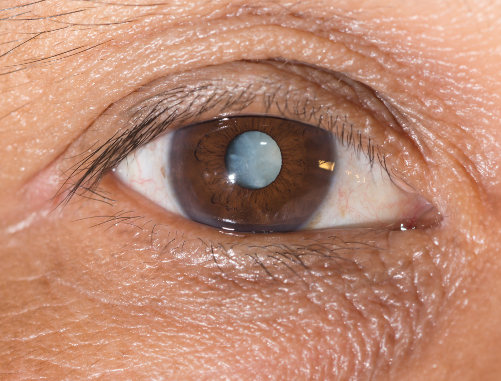The Sooner the Better – A New Approach to Cataract Surgery
Written by Dr. David Evans Last modified on April 23, 2019

I recently had dinner with South African surgeon Dr. Johaan Kruger who has been studying the benefits of simultaneous bilateral cataract surgery. Traditionally, cataract surgery has been performed as a sequential procedure, meaning that only one eye is operated on at a time, with weeks, sometimes months between surgeries. Dr. Kruger explained to me that he’s been taking a newer approach to this somewhat antiquated approach. One that I feel better serves the patient and procedure, and gives patients a wider array of options for presbyopia correction.
So what’s this new approach? Dr. Kruger has been performing cataract surgery in both eyes a day or two apart rather than waiting the weeks or months traditionally associated with the procedure. One of the more obvious reasons for this shortened time frame is because, in his experience, the quality of vision in the operated eye is so much improved after surgery, patients always wanted the second eye done quickly anyway. But interestingly, he discovered another surprising benefit. He found that some of his happiest patients were those who had multifocal IOLs implanted in both eyes over this shortened period of time.
Multifocal IOLs allow patients to have vision across a range of distances without glasses (unlike before cataract surgery). But some patients — even though they can see at near and distance — are not happy with the halos or shadowing that can be associated with the overlapping images of near and distance vision. This dissatisfaction has caused many surgeons to shy away from multifocal IOLs and not offer their patients this option for presbyopia correction.
So what does this all have to do with Dr. Kruger’s approach?
Over time, the brain compensates for the overlapping images of multifocal IOLs, allowing the shadowing and halos to dissipate; after which patients tend to be very happy with their full range of near and distance. The key, it seems, to correcting presbyopia with multifocal IOLs is for the patient to get through the adaptation period as quickly as possible. Enter Dr. Kruger’s approach. If both eyes receive multifocal IOLs at the same time (or close to it), it stands to reason that the brain has a lot easier time adapting and patient satisfaction increases dramatically.
So if performing cataract surgery over a shorter period of time provides for an all-round better experience and more options for the patients, why isn’t every surgeon doing it? There are a number of reasons, insurance coverage being at the forefront. Insurance companies (including Medicare) don’t reimburse for simultaneous bilateral cataract surgery, meaning that patients must have the procedure performed over more than one appointment. Currently there is no way around this antiquated safeguard, meaning that even Dr. Kruger’s patients must wait a day or two for the second surgery. But this, as Dr. Kruger confirms, still yields superior results to the traditional cataract surgery approach.
More research is needed, but we can expect to learn a lot more in the coming years about various new techniques for presbyopia correction and, in some cases, find out how patients react to and benefit from these treatments in unpredictable ways.
